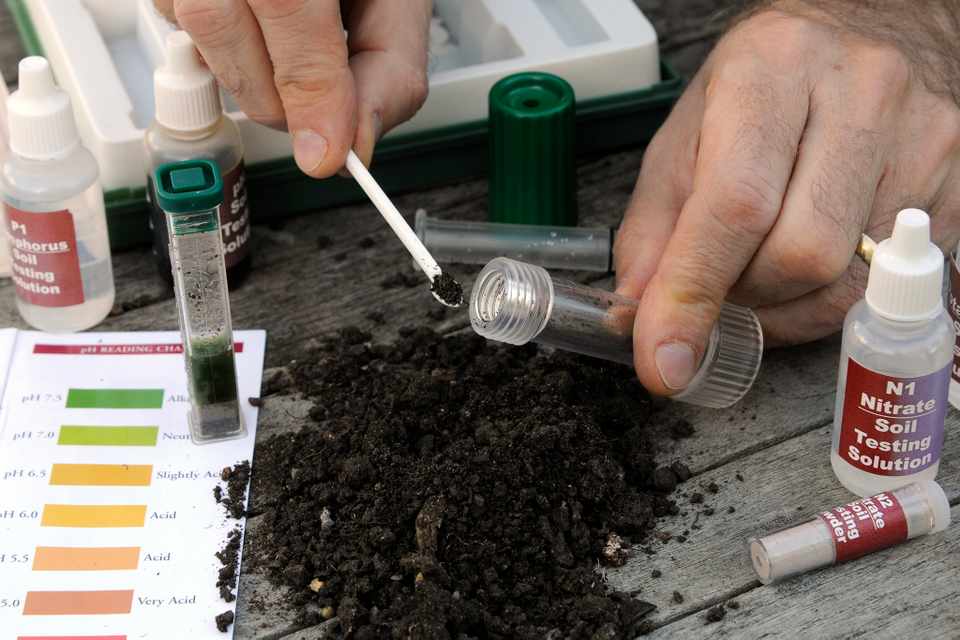Now with the garden finished and the lawn chores done, now is the time to be thinking about a soil test. The test is something any homeowner can perform easily and the expense of a University test is quite minimal considering the wealth of information it provides.
Farmers know well the importance of keeping the soils chemical nature in balance as its essential for maximum crop production and then their livelihoods.
Today with new technology, even large farms can be divided into two and a half acre parcels to test the soil primarily to prevent applying unnecessary fertilizer resulting in less water pollution and the wasting of money.

A soil test will reveal if enough nutrients are available for good growth and in the right balance. Another factor is the ph or the acidity of the soil. Nutrients may be present in the soil for a particular crop or lawn but with an unsuitable ph, they are locked in the soil and unavailable for growth.
In general, a ph of approximately 6.2 to 7 is suitable for lawns and most garden vegetables as well as flowers, trees and shrubs.
However, ericaceous plants (acid-loving) such as blueberries, rhododendron, azaleas and mountain laurel prefer a ph from the lower ph 4.0 and no more than 6.0 in which iron is available to these plants in sufficient quantities.
Another important factor is the CEC or cation exchange capacity that is a measure of the soils ability to hold nutrients on the soil particles so that they can be released into the soil solution over time for plant use. Typically, soils high in organic matter are ones with a higher CEC while those that are sandy typically have a lower CEC.
In addition, organic matter will give the soil a good tilth or structure to aid in plant growth as well as fostering the multiplication of soil microbes in which some actually will attack plant pathogens trying to enter the roots of the desirable plant.
Finally, the test contains a measure of the soil’s lime test index or buffering capacity of the soil’s ability to resist change.
For example, two soil samples on two separate farms might have an identical ph but the amounts of lime needed to raise the ph or sulfur to lower the ph is quite different due to the difference of the lime test index of the soils.
The above is a good example of why home test kits for ph are wholly in adequate as they cannot measure the soils buffer capacity.

To get started, fill out the soil test kit as directed especially with the particular crop or plants you are trying to grow. Next, take a soil sample from ten different spots in the lawn or garden and mix the sample in a clean bucket to obtain an average of the soil present.
Typically, a slice of the soil profile is best and one that is six inches deep for the farm or garden and three inches deep for the lawn.
Finally, send your kit by mail to the University and expect results in a couple weeks that will tell you exactly what to do or not to do. Typically in Summit County, the test that can be purchased is from Penn State University at a local garden center. The small effort made to adjust the soil will be rewarded with better results and more production in the vegetable garden.
Remember to not ignore the additions of organic matter to improve the tilth of the soil and microbial activity as the chemical nature is only one-third of a healthy soil equation.
Good productive soil is not as valuable as gold but so much more valuable.